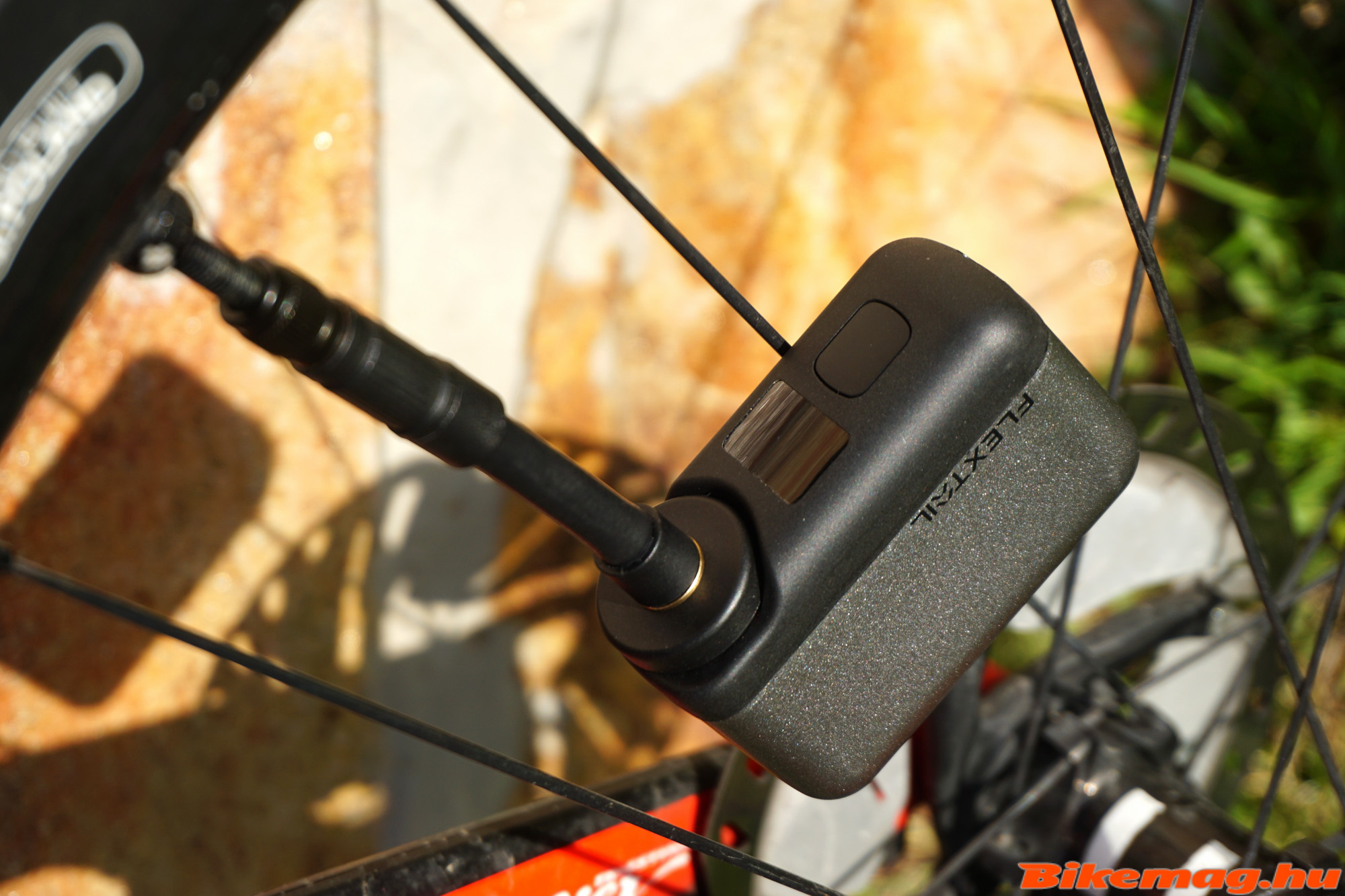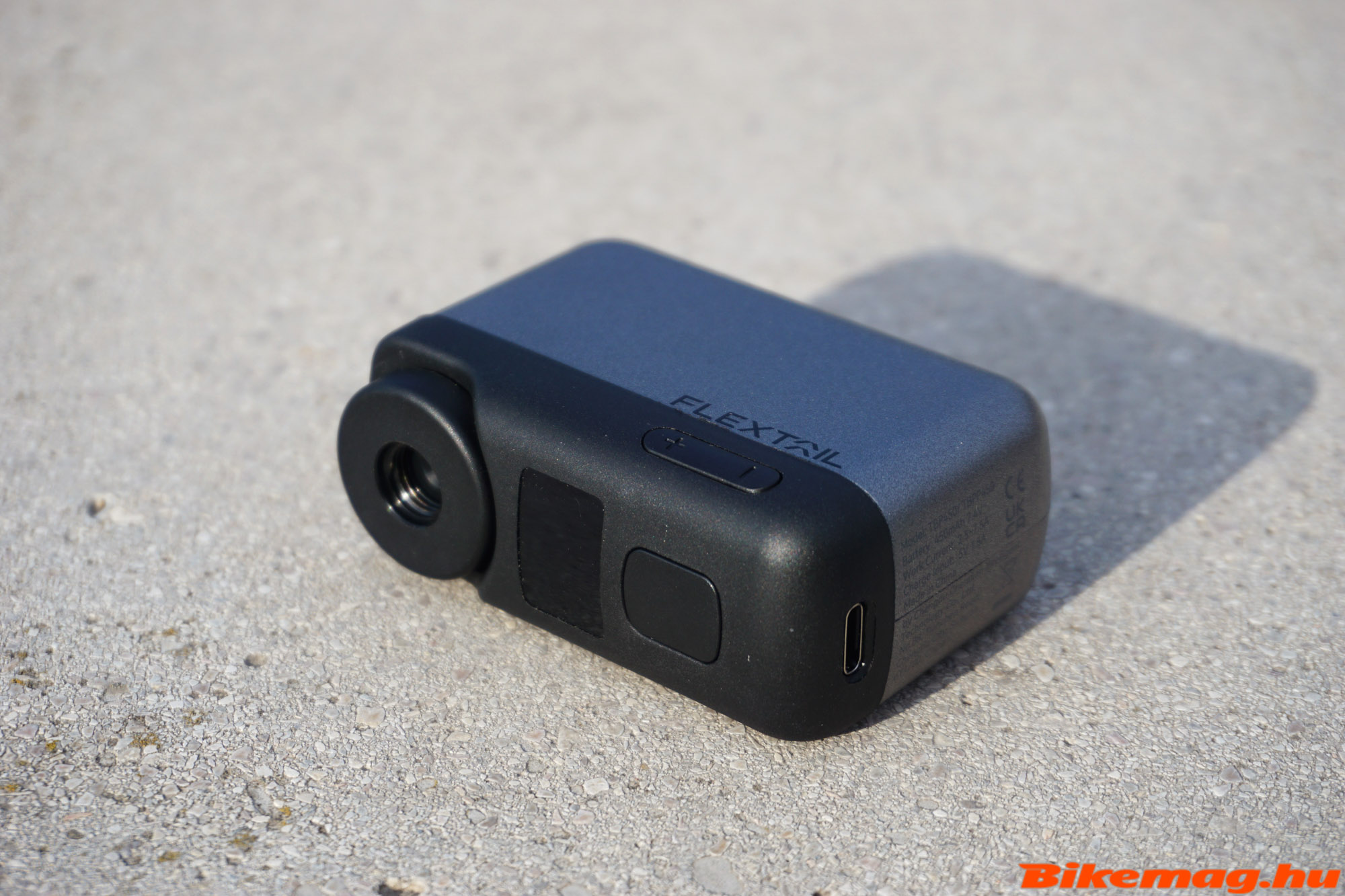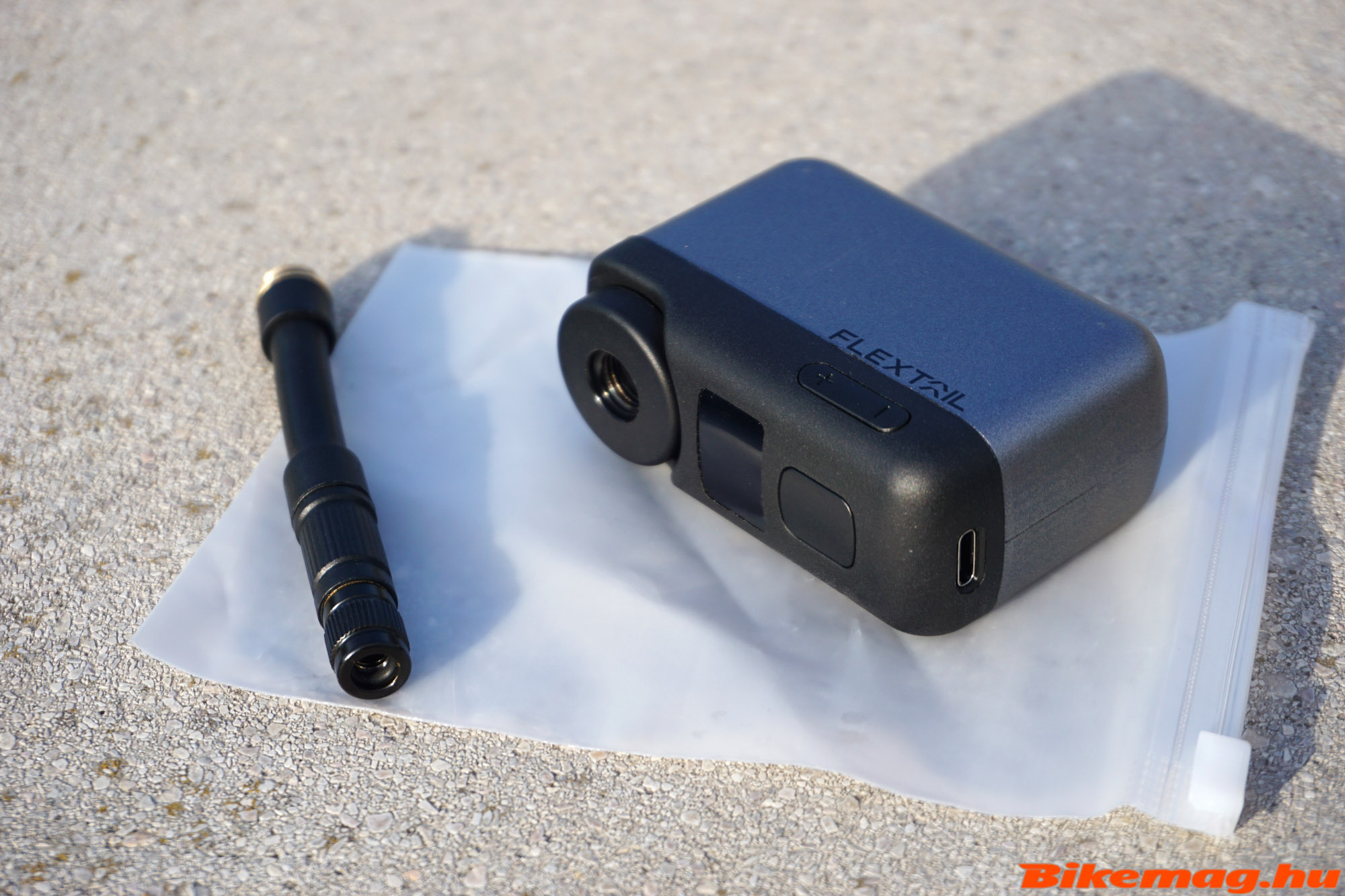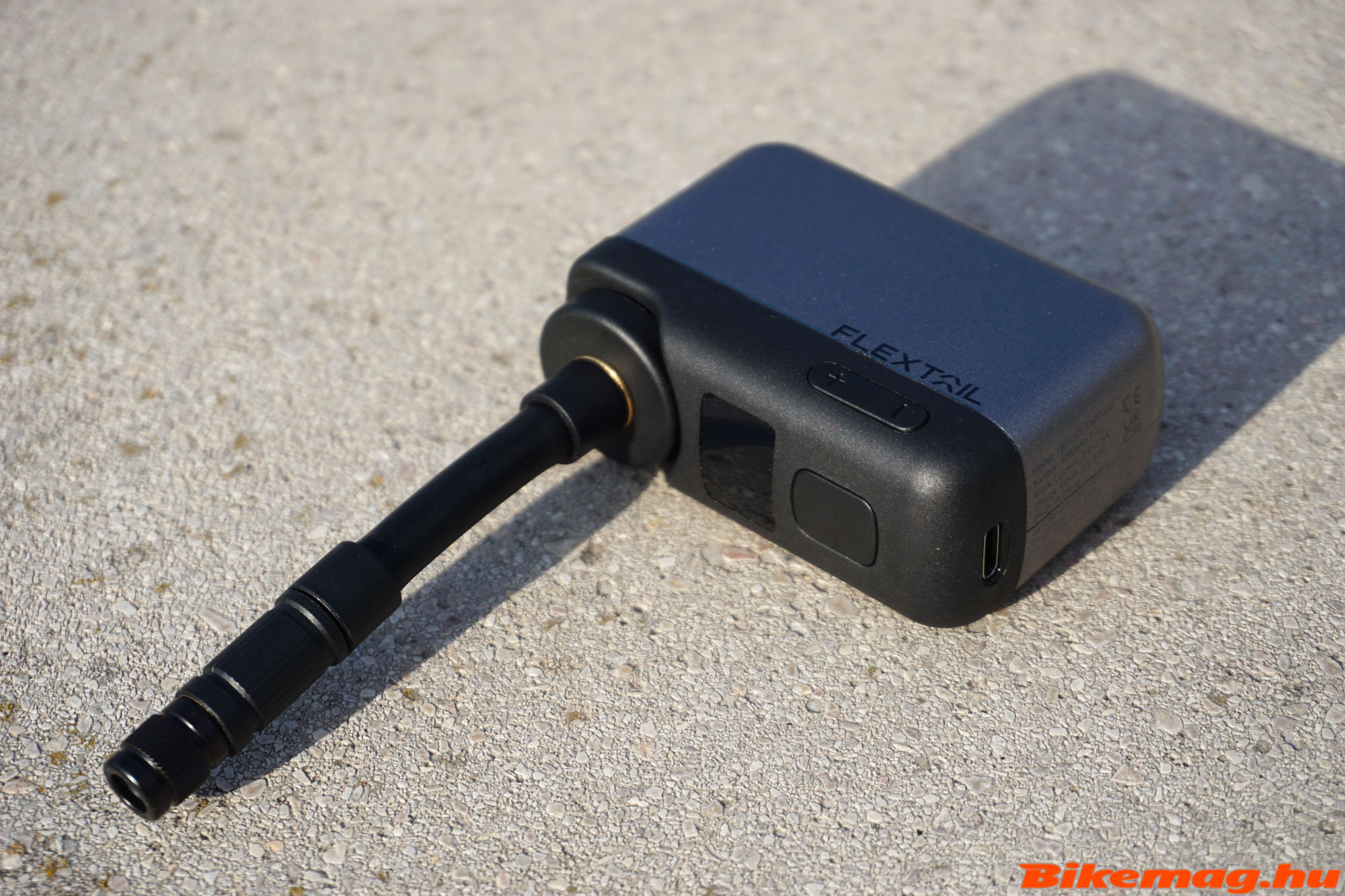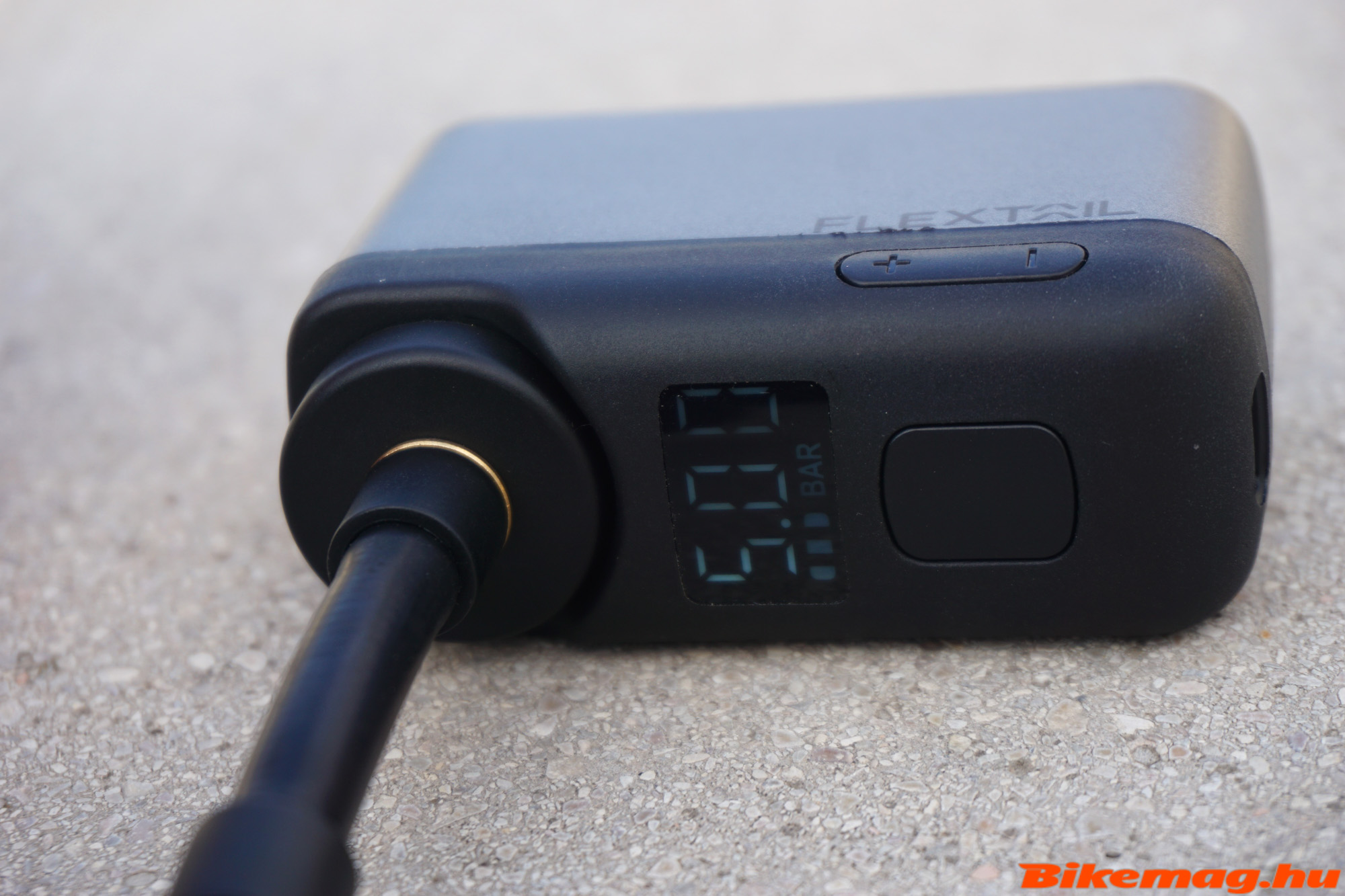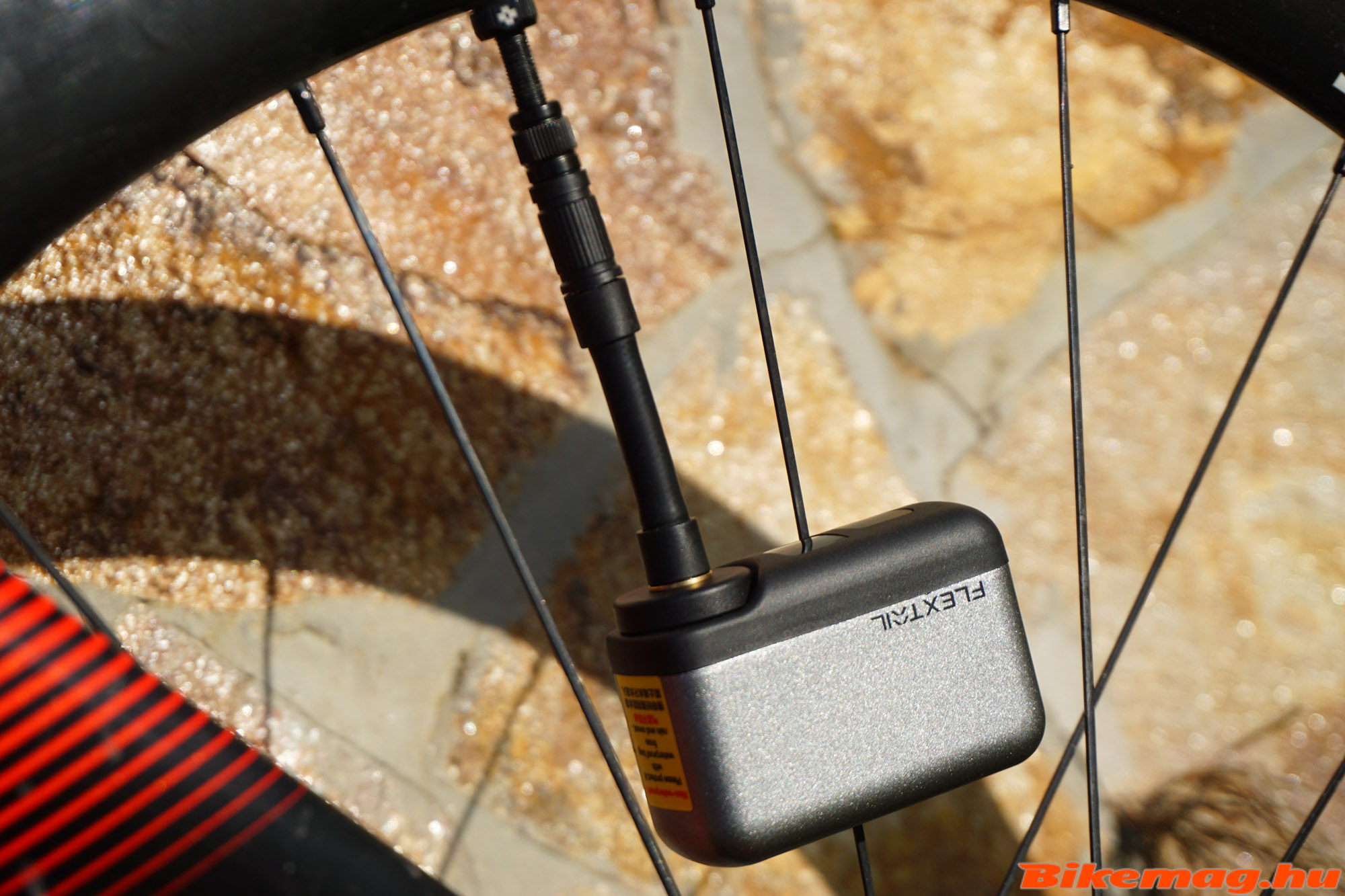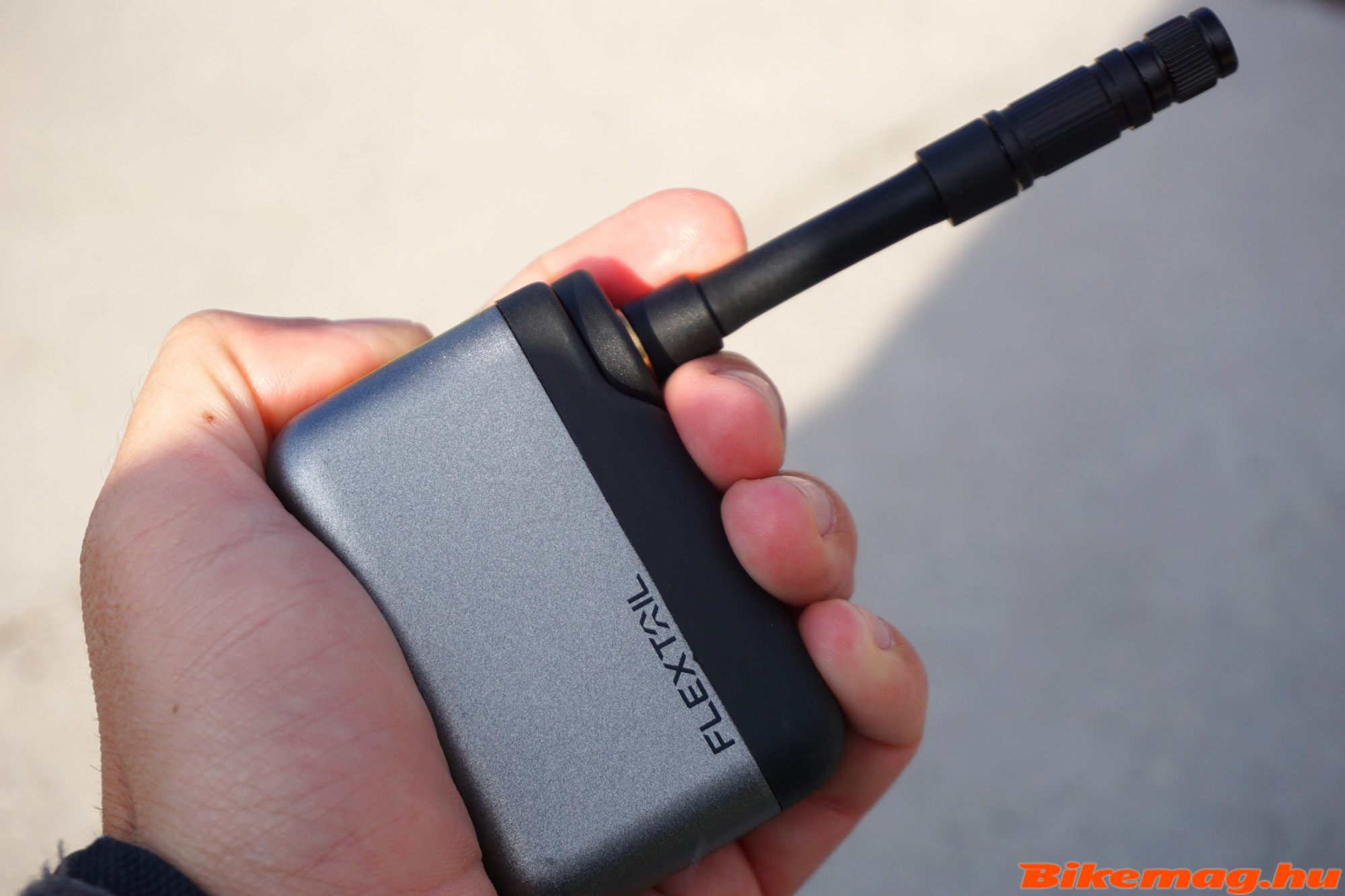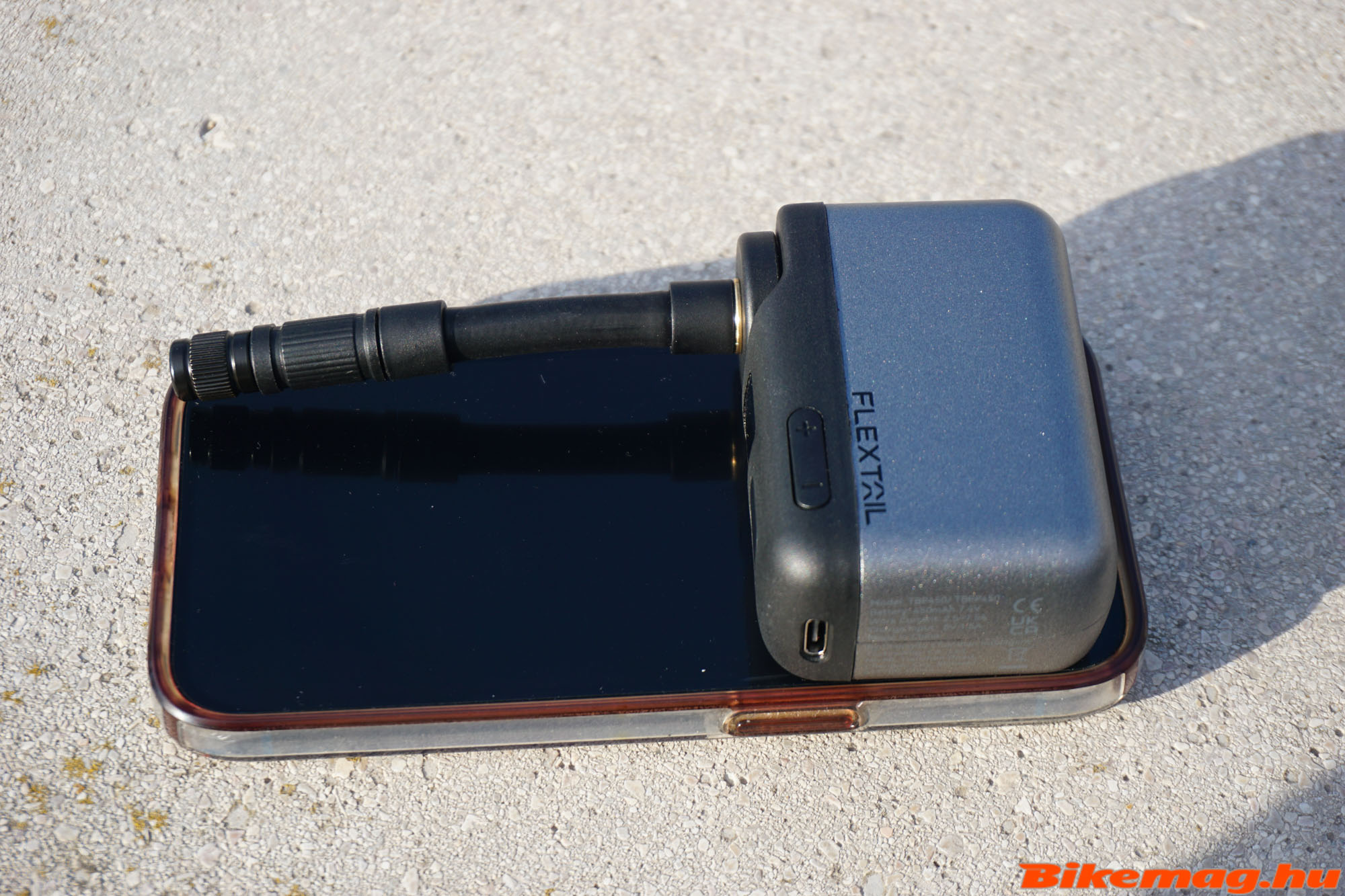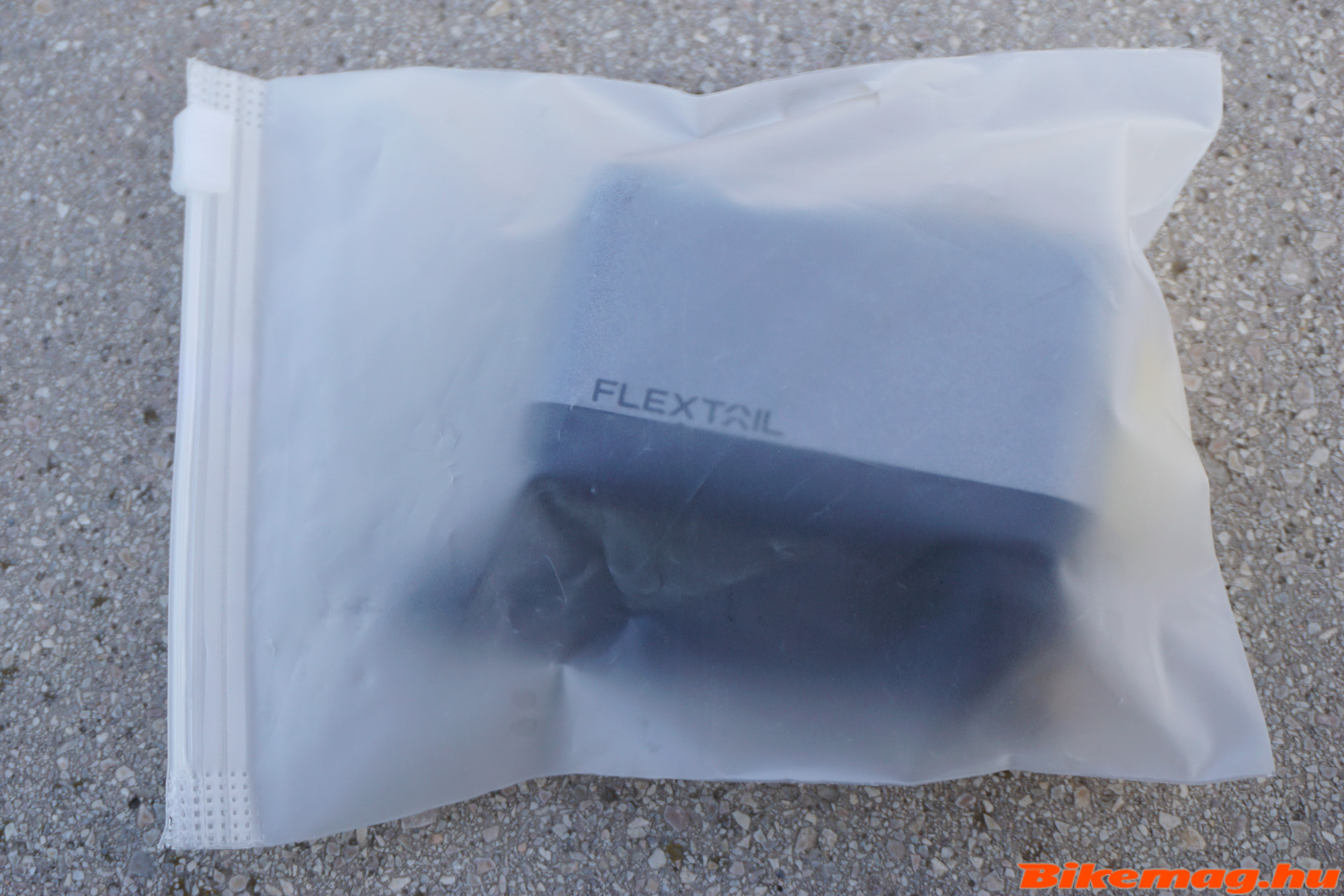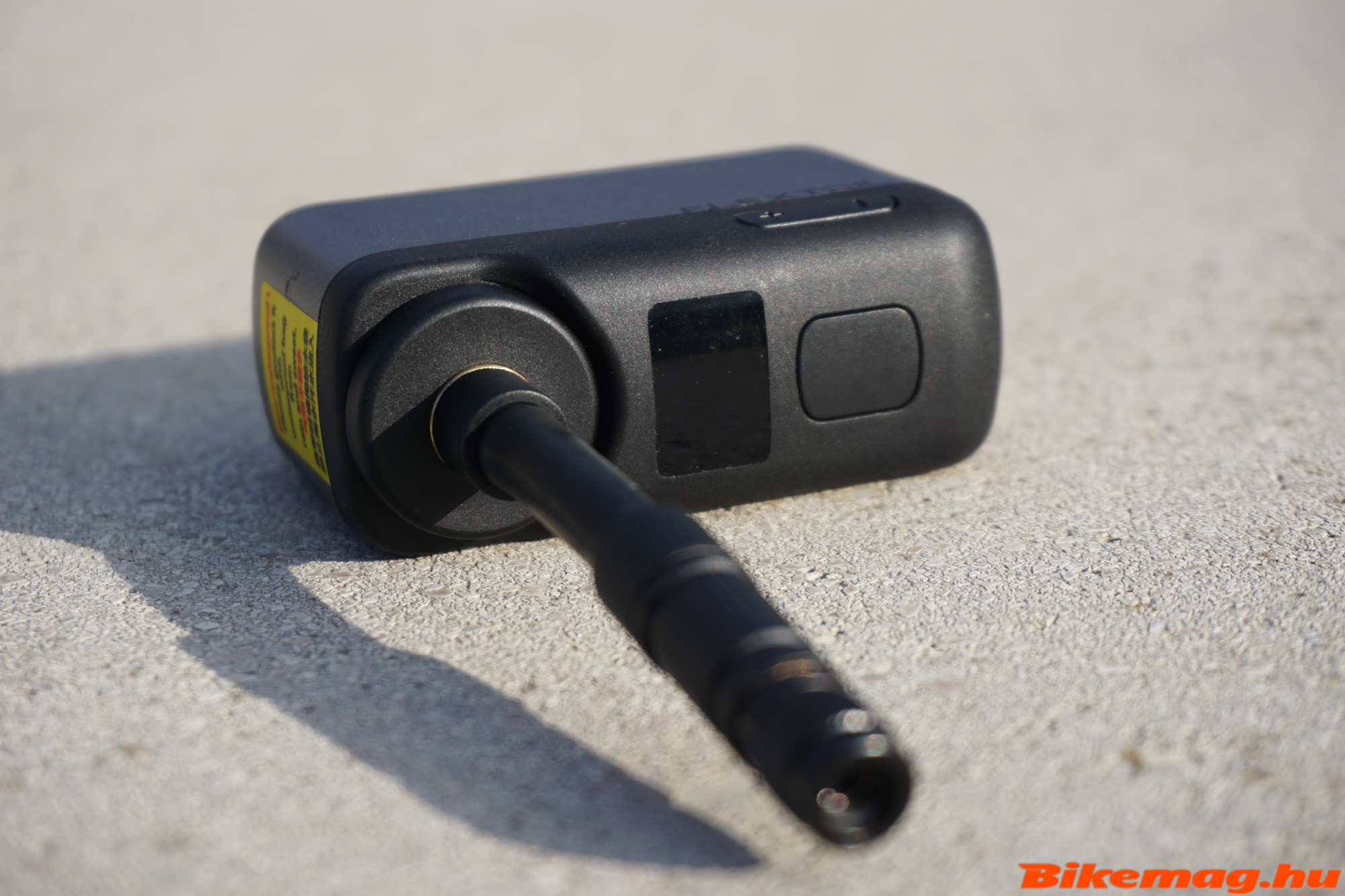In our magazine, one of the most popular topics last year was electric mini pumps, which is not surprising given the international trends, as more and more manufacturers are coming out with powerful electric mini pumps that are slowly replacing conventional mini pumps. At the end of last year, we received a promising electric mini-pump from Flextail, whose test you can read below.
A little over a year ago, I received my first electric mini pump for testing, which quickly changed the way I carry my bicycle from then on. The traditional mini pump was out of my pocket and replaced by an electric version. While I loved my expensive mini-pump, which got me out of trouble a few times and could even inflate my highway tyres to a reasonable pressure, the electric mini-pump is so much easier, more convenient, faster and can inflate my tyres to a higher pressure that I didn’t think twice about switching. Moreover, with the next generation I could set the desired pressure in advance and I didn’t even have to hold the pump in my hand while “pumping”, which took me even further away from using a traditional mini-pump.
In the last 1 year I have run into several press releases and advertisements showing new electric mini pumps, there is a noticeable increase in demand for electric pumps, and several manufacturers are trying to take advantage of this. Not surprisingly, Chinese brands are among them, which is no coincidence, as Chinese electric motor and battery manufacturers are gaining power and technical superiority. Why not produce electric mini pumps if the technology is there for them?!
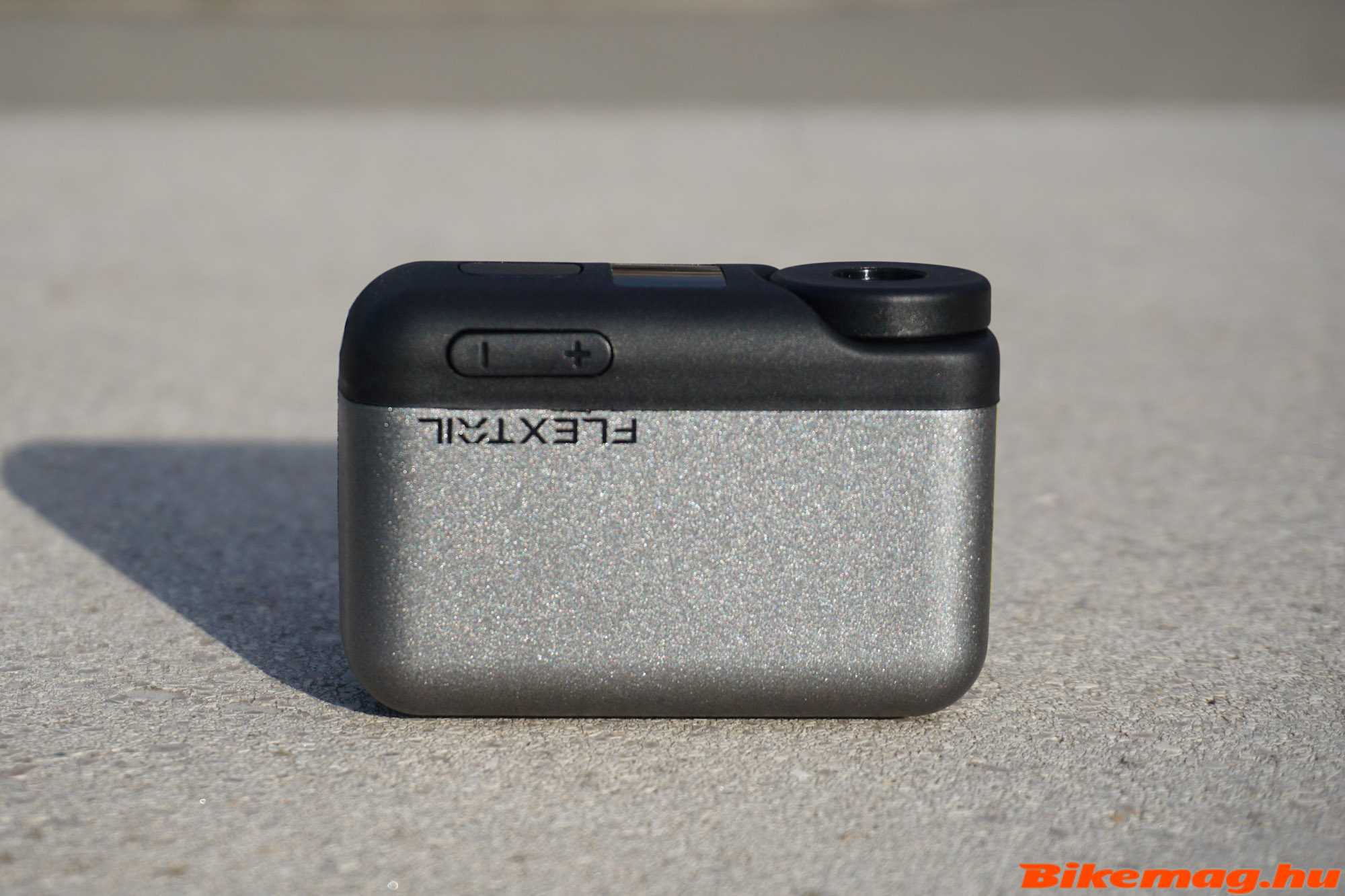 Last winter, I ran into an advertisement for Flextail several times a day, the Far Eastern manufacturer – who I had never heard of before – was heavily promoting their latest electric mini-pump. Clicking on their website, I saw that it had the same factory specs as my favourite pump, but at a better price. I wrote to them and said I would like to try it and after about 1 week I had the pump.
Last winter, I ran into an advertisement for Flextail several times a day, the Far Eastern manufacturer – who I had never heard of before – was heavily promoting their latest electric mini-pump. Clicking on their website, I saw that it had the same factory specs as my favourite pump, but at a better price. I wrote to them and said I would like to try it and after about 1 week I had the pump.
In the box I found the usual parts for electric mini pumps, the pump itself, a hose that is normally a car valve but comes with a preset converter, a needle valve adapter and a micro USB cable, and a bag to protect the pump from sweat and rain in your pocket. The pump measures 32x53x77 mm, which makes it one of the smaller pumps, easy to carry in a pocket or saddlebag, and it’s not completely square, but curved on the sides, so it actually takes up less space than you’d expect from its size. The pump body has a plastic coating which makes it difficult to transfer heat, so it doesn’t come with a silicone seal to protect your hands from a heated pump. The plastic housing also has a positive effect on weight, weighing just 131 grams, which puts it ahead of the competition. Sure, it makes the pump feel a bit ‘plastic’ and the knob rattles a bit when shaken, but let that be the biggest problem.
Flextail’s electric mini pump can be used without a hose, it has a classic auto/presta reversible head, but I think it is recommended to use it with a hose, because firstly the hose closes better, secondly you don’t necessarily have to hold the pump when using it with the hose on, thirdly not all valves are good if you push the pump by hand. And the hose doesn’t take up much space anyway, it fits in the bag next to the pump. I’m going to say quietly that I could have sworn that this hose was the same as the one on my own pump.
There’s a display and 3 buttons under the pump head, the big button is for turning the pump on, off and starting and stopping pumping, and the other two buttons are for presetting the pressure you want to inflate your tyres to. In practice, the pump works by turning on the pump by pressing the big button longitudinally, setting the desired pressure and pressing the big button to start inflating the tyre, and then stopping as soon as the pump reaches the set pressure. (The display is difficult to photograph, but in reality everything is clearly visible).
The most important question, of course, is how much pressure the battery can handle and how much it can take.
According to the factory, the Flextail electric mini pump can reach a maximum of 120 psi, or about 8.3 bar. And at that pressure it can inflate a 700x25c tyre twice. The question is, of course, who uses such a tyre at this pressure nowadays, because we are now using lower pressures, especially when using tubeless tyres, and then size 25 is becoming retro. I still have a wheel like this at home, so I tested if the pump really does the factory specs.
I set it to 8.3 bar and started measuring how long it takes to reach that pressure. The first measurement was 5.5 bar, which I reached in 56 seconds, then I checked the stopwatch at 6.5 bar, which showed 75 seconds, at 8 bar I was at 117 seconds, and 8.3 bar was reached in 128 seconds. The 5.5 bar was reached according to the factory data, the 8.3 bar a little slower, but I think that’s enough.
I tested the battery capacity at 5.5 bar, because that’s what the manufacturer says, plus that’s the recommended pressure for a sporty bike under 25 on tubeless tyres. The test was carried out by inflating the tyre, then immediately deflating and re-inflating it and repeating this until the Flextail electric mini-pump was fully deflated. Four times in a row I was able to inflate it to 5.5 bar, and then on the fifth time it got up to 3.4 bar. By the end it had warmed up quite a bit, or more accurately, boiled up would be the right word, but that shouldn’t be surprising, as all the pumps I’ve tried so far have behaved like this during continuous use. According to the factory, it should have lasted 4, so it can handle a bit more. The usage time suggests that it can handle 8.3 bar twice.
Coming back to heating, it’s interesting that the capacity of the battery doesn’t really change when it gets warm (and it does get very warm), although you only have to think of mobile phone batteries which, when they get warm (or cold), can drop to a fraction of their capacity. For this reason, I even put the pump to a real-life test, specifically putting it in the fridge to see what happens to it when it’s in the cold a lot, as it’s not uncommon for it to be stored in a bag for hours in sub-zero temperatures during winter cycling. It was on maximum when it was out of the fridge, according to the electronics, so the cold didn’t affect it. There is also the question of how much the battery is drained when not in use. I didn’t touch it for two and a half months and when I put it on the charger, after about 3 minutes the display showed maximum again. The pump recharges from zero in 25-30 minutes.
Is it worth it?
Currently, you can get a Flextail electric mini pump for just 71 EUR, which is 2-3 times the price of a conventional mini pump, but it’s not just a set that makes it a pain to inflate the tyre to just enough pressure to get you home in case of a puncture, but also allows you to reach the optimum pressure easily, without any suffering, and continue cycling in peace. Is it worth it? Worth it!
Click here for more information on Flextail.


